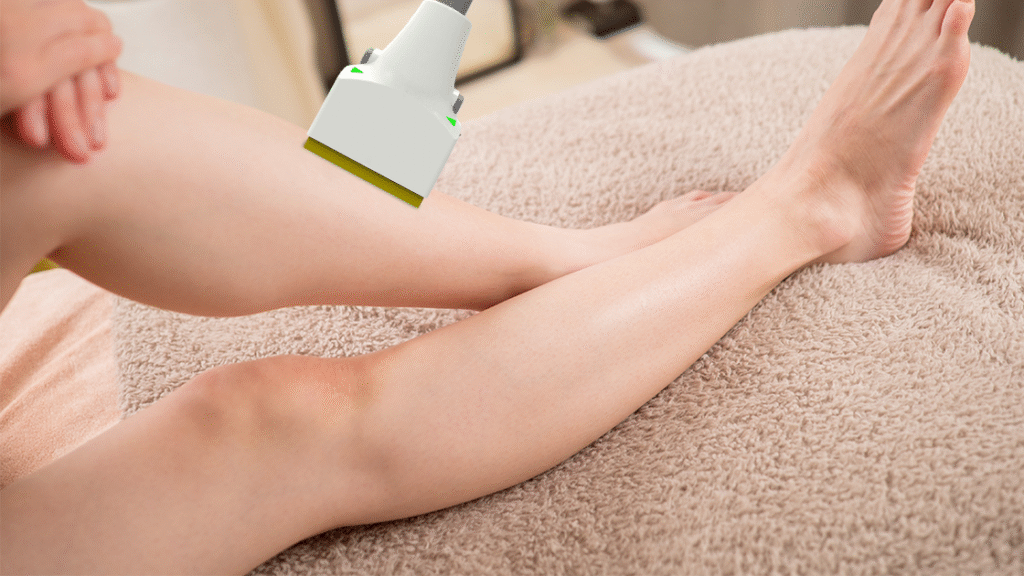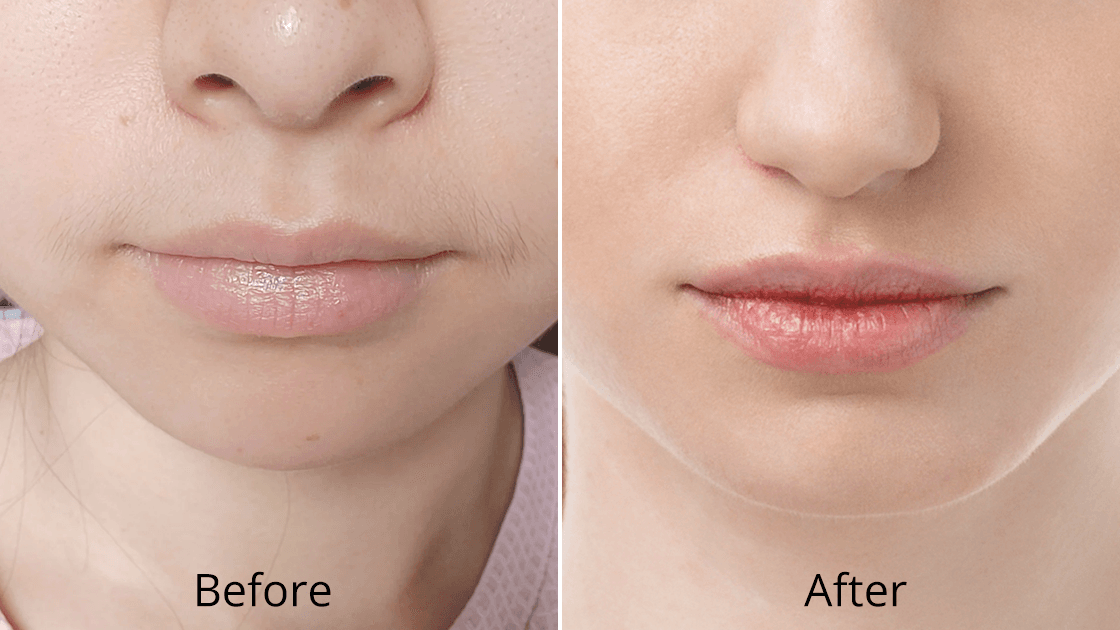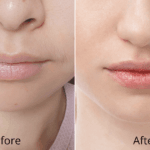In the ever-evolving landscape of aesthetic medicine, the pursuit of perfectly sculpted calves has led to groundbreaking innovations in non-invasive body contouring. Among these revolutionary technologies, laser lipolysis stands as a beacon of hope for individuals seeking to transform their lower legs without the risks and downtime associated with traditional surgical procedures.
1. Introduction to Laser Lipolysis for Calves
The quest for well-defined, proportionate calves has driven the development of advanced laser technologies that specifically target stubborn fat deposits in the lower leg region. Understanding the fundamentals of laser lipolysis and its application to calf contouring provides the foundation for making informed decisions about body sculpting treatments.
1.1 레이저 지방 분해란 무엇인가요?
Laser lipolysis represents a paradigm shift in non-invasive fat reduction technology, utilizing precisely calibrated laser energy to target and eliminate unwanted adipose tissue. This innovative procedure employs specific wavelengths of light to penetrate the skin and selectively heat fat cells, causing them to rupture and be naturally eliminated by the body’s lymphatic system. Unlike traditional liposuction, laser lipolysis requires no incisions, general anesthesia, or extended recovery periods, making it an attractive option for patients seeking subtle yet effective body contouring. The technology works by creating controlled thermal injury to adipocytes while preserving surrounding tissues, resulting in gradual fat reduction over several weeks following treatment.
1.2 Why Target Calves with Laser Lipolysis?
The calf area presents unique challenges for fat reduction due to its complex anatomical structure and the difficulty of targeting specific fat deposits through conventional methods. Many individuals struggle with disproportionate calf size that doesn’t respond to diet and exercise, creating aesthetic concerns that affect their confidence and clothing choices. The lower leg region contains both superficial and deeper fat layers that require precise targeting to achieve optimal results without compromising muscle definition or skin integrity. Laser lipolysis offers a solution that can selectively address these fat deposits while promoting skin tightening, creating a more sculpted and proportionate appearance that enhances overall leg aesthetics.
1.3 Introducing PowerSculp 1064nm Diode Laser Lipolysis System
The PowerSculp 1064nm Diode Laser Lipolysis System represents the cutting-edge of non-invasive body contouring technology, specifically engineered to deliver optimal results for calf fat reduction. This advanced system utilizes a precise 1064nm wavelength that penetrates deep into subcutaneous fat layers while minimizing thermal damage to surrounding tissues. The diode laser technology ensures consistent energy delivery across the treatment area, providing uniform heating of adipose tissue for maximum effectiveness. With its sophisticated cooling system and adjustable parameters, the PowerSculp system allows for customized treatment protocols that can be tailored to each patient’s specific needs and anatomical characteristics, ensuring both safety and efficacy.
1.4 Benefits of Laser Lipolysis Over Traditional Fat Reduction Methods
Non-Invasive Procedure: Eliminates risks linked to surgery such as infection, scarring, and long recovery periods.
Minimal Downtime: Patients can usually resume normal activities immediately after treatment with little to no discomfort.
Targeted Fat Reduction: Laser technology precisely reduces fat without damaging nearby muscles or skin.
Preserves Natural Contours: Focuses on specific problem areas while maintaining the natural shape of the calves.
Skin Tightening Effect: Laser energy stimulates collagen production, reducing loose skin often caused by rapid fat loss.
2. Understanding Calf Fat and Body Contouring Challenges
Comprehending the complex anatomy and physiology of the calf region is essential for understanding why traditional fat reduction methods often fail to achieve desired results in this area. The unique challenges presented by calf fat distribution and the psychological impact of disproportionate lower legs highlight the need for specialized treatment approaches.
2.1 Anatomy of the Calf Area: Muscles and Fat Distribution
The calf region consists of complex anatomical structures including the gastrocnemius and soleus muscles, surrounded by distinct fat compartments that vary in thickness and distribution. Subcutaneous adipose tissue in the calf area is organized in fibrous septae that create unique challenges for fat reduction procedures. The superficial fascial system divides fat into compartments, with some areas containing more fibrous tissue than others, making uniform fat reduction difficult to achieve through conventional methods. Understanding these anatomical variations is crucial for effective treatment planning, as different areas of the calf may require varying laser parameters and treatment protocols. The vascular and lymphatic networks in the calf region also play important roles in the body’s natural elimination of disrupted fat cells following laser lipolysis treatment.
2.2 Common Causes of Calf Fat Accumulation
Genetic Predisposition: Some individuals naturally store more fat in the lower leg area due to inherited traits.
Hormonal Influences: Hormonal changes, especially fluctuations in estrogen, can affect fat distribution and cause stubborn calf fat.
Lifestyle Factors: Sedentary behavior and poor circulation can lead to increased fat buildup in the calves.
Medical Conditions: Certain health issues may contribute to calf fat accumulation or affect metabolism.
Age-Related Changes: Reduced muscle mass and slower metabolism with age can make calf fat more noticeable and harder to reduce with diet and exercise.

2.3 Why Calf Fat Is Difficult to Reduce Naturally
The physiological characteristics of calf fat make it particularly resistant to traditional reduction methods, creating frustration for individuals seeking improved lower leg aesthetics. The calf region has relatively low metabolic activity compared to other body areas, resulting in slower fat turnover and reduced response to dietary modifications. The fibrous nature of calf fat, combined with limited blood flow in certain areas, makes it difficult for the body to mobilize and eliminate these fat stores through conventional means. Exercise targeting the calf muscles primarily builds muscle mass rather than reducing fat, sometimes making the legs appear larger rather than more sculpted. The unique anatomical structure of the lower leg, with its compartmentalized fat distribution, requires targeted approaches that can address specific problem areas while preserving overall leg proportions and functionality.
2.4 Psychological and Aesthetic Impact of Calf Fat
The psychological impact of disproportionate calf fat goes beyond appearance—it often affects confidence, clothing choices, and daily life. Many people feel self-conscious wearing shorts, skirts, or anything that draws attention to their lower legs. This body image issue can lead to avoiding social events and skipping activities like swimming or sports. When diet and exercise fail to deliver results, it can cause frustration and a sense of helplessness. Personal and professional confidence may suffer, making effective treatment options essential for restoring self-esteem.
3. How PowerSculp Laser Lipolysis Works on Calves
The sophisticated technology behind PowerSculp laser lipolysis represents a breakthrough in targeted fat reduction, utilizing advanced physics principles to achieve precise and effective results in the challenging calf area. Understanding the scientific mechanisms and treatment protocols provides insight into why this technology has become the gold standard for non-invasive calf contouring.
3.1 The Science Behind 1064nm Diode Laser Lipolysis
The 1064nm wavelength represents an optimal balance between tissue penetration and selective absorption by adipose tissue, making it highly effective for calf fat reduction applications. This specific wavelength penetrates deeper into subcutaneous fat layers compared to shorter wavelengths, allowing for effective treatment of both superficial and deeper fat deposits. The laser energy is preferentially absorbed by fat cells due to their high water content and specific optical properties, creating selective thermolysis that targets adipocytes while minimizing damage to surrounding structures. The photomechanical and photothermal effects of the 1064nm laser cause disruption of fat cell membranes, leading to cell death and subsequent elimination through the body’s natural metabolic processes. This wavelength also stimulates collagen production in the dermis, providing additional skin tightening benefits that enhance overall treatment outcomes.
3.2 Mechanism of Fat Cell Disruption and Melting
The PowerSculp system employs controlled thermal energy to induce apoptosis in target adipocytes through a process known as selective photothermolysis. When laser energy is absorbed by fat cells, it causes rapid heating that disrupts cellular membranes and denatures intracellular proteins, leading to cell death. The thermal energy also causes liquefaction of fat cell contents, making them easier for the body’s lymphatic system to process and eliminate. The controlled heating process ensures that temperatures remain within therapeutic ranges that maximize fat cell destruction while preserving surrounding tissues. Macrophages and other immune cells respond to the cellular debris, initiating a natural inflammatory response that helps clear damaged cells from the treatment area. This biological process continues for several weeks following treatment, resulting in gradual fat reduction and improved body contouring.
3.3 Precision Targeting of Calf Fat Without Damaging Surrounding Tissue
The PowerSculp system’s advanced targeting capabilities ensure precise delivery of laser energy to fat deposits while protecting surrounding muscles, nerves, and blood vessels. The system employs sophisticated cooling mechanisms that maintain skin surface temperature within safe limits, preventing thermal damage to the epidermis and dermis. Real-time temperature monitoring and feedback systems allow for precise control of energy delivery, ensuring optimal treatment parameters for each individual patient. The selective absorption properties of the 1064nm wavelength mean that muscle tissue, connective tissue, and other non-adipose structures are largely unaffected by the treatment. This precision targeting allows for effective fat reduction without compromising the structural integrity or functionality of the calf area, preserving natural movement patterns and muscle function.
3.4 Treatment Duration and Number of Sessions Required
PowerSculp calf treatments typically require 25-30 minutes per session, with most patients needing 2-4 treatment sessions spaced 2-4 weeks apart for optimal results. The number of sessions required depends on factors including the amount of fat to be reduced, individual metabolic response, and desired aesthetic outcomes. Treatment protocols are customized based on pre-treatment assessments, with parameters adjusted to account for variations in skin thickness, fat distribution, and individual patient characteristics. The gradual nature of fat cell elimination means that results continue to improve for 8-12 weeks following the final treatment session. Some patients may benefit from maintenance treatments every 6-12 months to sustain results, particularly if lifestyle factors contribute to ongoing fat accumulation in the treated area.
4. Advantages of Using PowerSculp for Calf Lipolysis
The PowerSculp system offers numerous advantages that make it the preferred choice for calf fat reduction among both practitioners and patients. These benefits extend beyond simple fat reduction to encompass overall treatment experience, safety profile, and long-term satisfaction with results.
4.1 Non-Invasive and Painless Procedure
One of the key advantages of PowerSculp laser lipolysis is its non-invasive approach—no incisions, injections, or surgery required. Patients usually feel minimal discomfort, often describing the sensation as a gentle warming rather than pain. PowerSculp’s advanced cooling system keeps the skin surface at a safe, comfortable temperature during treatment. This prevents thermal injury and enhances patient comfort throughout the session. Unlike surgery, which involves anesthesia and added risk, PowerSculp is performed in-office without any anesthesia. Its painless nature makes it ideal for those with anxiety about procedures or contraindications to surgery.
4.2 No Downtime and Quick Recovery
PowerSculp treatments require no recovery time, allowing patients to immediately return to normal activities including work, exercise, and social commitments. The absence of surgical trauma means there is no risk of infection, scarring, or other complications that typically accompany invasive procedures. Patients can undergo treatment during lunch breaks or between daily activities without disrupting their schedules or requiring time off work. The non-invasive nature of the treatment eliminates the need for post-treatment garments, wound care, or activity restrictions that are common with surgical fat reduction procedures. This convenience factor makes PowerSculp an attractive option for busy individuals who want to improve their appearance without significant lifestyle disruption.
4.3 High Penetration Depth for Effective Fat Reduction
The 1064nm wavelength used by PowerSculp offers greater penetration depth than many other laser wavelengths. It effectively targets both superficial and deep fat layers in the calf area. This deep reach allows treatment of stubborn fat deposits that other methods may miss. By addressing multiple fat layers at once, the system increases efficiency and reduces the number of sessions needed. The extended penetration range also enables treatment of larger areas in a single session. This makes the procedure more cost-effective and convenient for patients. Deep and varied fat distribution in the calves makes this feature especially valuable.
4.4 Skin Tightening Benefits Along with Fat Reduction
PowerSculp laser lipolysis provides dual benefits of fat reduction and skin tightening, addressing common concerns about loose or sagging skin that may occur with rapid fat loss. The thermal energy delivered by the laser stimulates collagen production in the dermis, leading to improved skin elasticity and firmness over time. This collagen stimulation helps create a more sculpted and toned appearance, enhancing the overall aesthetic outcome of the treatment. The skin tightening effects continue to improve for several months following treatment as new collagen is produced and existing collagen fibers are remodeled. This dual action makes PowerSculp particularly effective for addressing age-related changes in skin quality while simultaneously reducing unwanted fat deposits.
4.5 Suitable for All Skin Types and Genders
The PowerSculp system is designed to be safe and effective for all skin types and phototypes, making it accessible to a diverse patient population. The 1064nm wavelength has minimal interaction with melanin in the skin, reducing the risk of pigmentation changes or other skin complications that can occur with other laser wavelengths. Both men and women can benefit from PowerSculp treatments, with treatment protocols customized to account for differences in skin thickness, fat distribution, and aesthetic goals. The system’s versatility allows for treatment of various calf shapes and sizes, from subtle contouring to more dramatic fat reduction. This universal applicability makes PowerSculp an inclusive treatment option that can address the diverse needs of patients seeking calf improvement.
5. The Treatment Process: What to Expect
Understanding the complete treatment process helps patients prepare for their PowerSculp experience and set realistic expectations for results. The comprehensive approach to patient care ensures optimal outcomes while maintaining the highest standards of safety and comfort.
5.1 Initial Consultation and Calf Assessment
The treatment journey begins with a comprehensive consultation where qualified practitioners evaluate the patient’s calf anatomy, fat distribution, and aesthetic goals. During this assessment, medical history is reviewed to identify any contraindications or factors that may affect treatment outcomes. Practitioners use advanced imaging techniques and physical examination to map fat deposits and determine the most effective treatment strategy. Realistic expectations are discussed, including anticipated results, treatment timeline, and potential variations in individual response. Patients receive detailed information about the procedure, including pre-treatment preparation, treatment experience, and post-treatment care instructions. This thorough consultation process ensures that patients are well-informed and comfortable with their treatment plan before proceeding.
5.2 Preparing the Patient for Laser Lipolysis
To ensure safety and maximize treatment results, the following pre-treatment steps are taken:
Patients are advised to stay well-hydrated for several days before treatment to support fat cell elimination.
The target area is thoroughly cleansed and disinfected to enhance laser penetration and reduce infection risk.
Photographs and measurements are taken to document the pre-treatment condition and track progress.
The patient is positioned comfortably to provide clear access to the calf area and ensure relaxation during treatment.
The practitioner explains each step of the process and addresses any final questions or concerns before starting.

5.3 Step-by-Step Treatment Procedure Using PowerSculp
The PowerSculp treatment procedure follows a systematic approach designed to maximize effectiveness while ensuring patient comfort and safety. The treatment area is marked to ensure complete coverage and uniform energy delivery across all target zones. The PowerSculp handpiece is applied to the skin with appropriate coupling gel to ensure optimal energy transmission. Laser parameters are adjusted based on the patient’s specific characteristics and treatment goals, with real-time monitoring of tissue response. The handpiece is moved systematically across the treatment area, delivering controlled thermal energy to fat deposits while maintaining skin surface temperature within comfortable limits. Throughout the procedure, patients receive regular comfort checks and parameter adjustments as needed to ensure optimal treatment experience.
5.4 Post-Treatment Care and Follow-Up
To maximize results and ensure a smooth recovery, patients should follow these post-treatment guidelines:
Drink plenty of water to help flush out disrupted fat cells via the lymphatic system.
Light massage of the treated area may be recommended to support lymphatic drainage and accelerate fat elimination.
Attend scheduled check-ups to monitor progress, review results, and evaluate the need for additional sessions.
Practitioners provide personalized guidance, including signs of adverse reactions and when to contact a medical professional.
Patients are informed that visible results will develop gradually over several weeks, not immediately after treatment.
5.5 Expected Results Timeline
PowerSculp results follow a clear timeline, helping patients know when to expect visible changes in calf shape. Initial improvements may appear within 2–4 weeks as the body begins clearing disrupted fat cells. More noticeable changes usually occur 6–8 weeks after treatment, with continued progress over the next month. Collagen stimulation adds skin-tightening benefits, which become visible around 2–3 months post-treatment. Final results typically appear 3–4 months after the last session. Patients who maintain healthy habits often enjoy long-lasting improvements. Each person’s healing and metabolism vary, so follow-up visits are key to tracking results.
6. FAQs about Laser Lipolysis for Calves
Not quite. PowerSculp’s 1064nm diode laser penetrates deep to liquefy stubborn fat cells in the calves without harming surrounding tissues. It’s not just heat—it’s precision fat disruption with scientific finesse.
You get more than shrinkage. Laser lipolysis sculpts and defines your calves by targeting bulges while preserving natural contours. Think lean, toned, and symmetrical—not deflated.
No pain, no panic. PowerSculp is a non-invasive and virtually painless treatment. Most clients report a warm sensation—more spa-like than surgical.
Walking boosts fitness, but localized fat deposits in calves often resist cardio. The laser selectively targets these stubborn cells and encourages your body to metabolize them. It’s high-tech backup for your hard work.
Most users start seeing visible slimming in 2–4 weeks, with continued improvement over 3 months. Combine with healthy habits, and you’ll enjoy your calf contour well into flip-flop weather and beyond.
Quite the opposite. The 1064nm diode wavelength also stimulates collagen production, so your skin tightens as the fat fades. You’ll lose volume without losing tone.
7. Conclusion: Why Choose PowerSculp Laser Lipolysis for Your Calves?
PowerSculp 1064nm Diode Laser Lipolysis offers a cutting-edge, non-invasive solution for stubborn calf fat that resists diet and exercise. Backed by science and trusted for safety, this advanced technology precisely targets fat cells without harming surrounding tissue—preserving your natural leg contours. Beyond fat reduction, PowerSculp promotes collagen production, helping to tighten skin and enhance calf definition. Patients enjoy visible results without surgery, downtime, or discomfort—just smoother, slimmer calves and boosted confidence. Whether you’re aiming for symmetry, improved aesthetics, or greater freedom in fashion choices, PowerSculp delivers. It’s suitable for all genders, skin types, and body goals. With a proven track record and a commitment to patient satisfaction, PowerSculp stands out as the smart, safe, and effective choice for calf contouring. Choose PowerSculp—not just for how you look, but how you feel.
8. 참조
- 파워스컬프 레이저 지방분해가 올 여름에 성공할 수 있을까요?
- Why Non-Invasive Fat Removal Is Taking Over 2025
- Review of the Mechanisms and Effects of Noninvasive Body Contouring Devices on Cellulite and Subcutaneous Fat
- Clinical studies demonstrating the safety and efficacy of 1064nm diode laser technology for fat reduction have consistently shown significant improvements in body contouring with minimal adverse effects.
- Efficacy and safety of long pulse 1064nm lasers in noninvasive lipolysis and skin tightening








